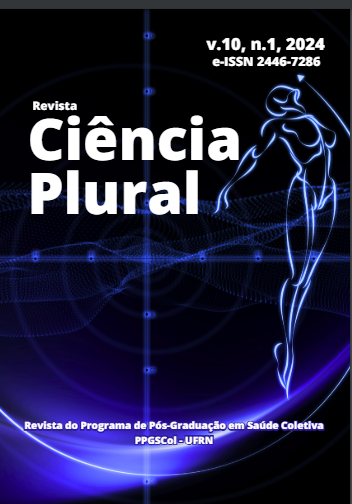¿LOS ANTISÉPTICOS BUCALES UTILIZADOS EN LA RUTINA DENTAL TIENEN EFICACIA ANTIVIRAL? UNA REVISIÓN SISTEMÁTICA DE ESTUDIOS IN VITRO
DOI:
https://doi.org/10.21680/2446-7286.2024v10n1ID34126Resumen
Introdução: Os enxaguatórios bucais desempenham um papel importante na clínica odontológica, porém seu efeito sobre as viroses requer pesquisas. Objetivo: Revisar estudos in vitro para identificar o efeito de diferentes enxaguantes bucais sobre os principais vírus associados ao atendimento odontológico de rotina . Metodologia:Foram pesquisadas as seguintes bases de dados até dezembro de 2022: PubMed, Embase, Scopus e Web of Science; a Biblioteca Cochrane e a Biblioteca Virtual em Saúde (BVS); bem como literatura cinzenta. Foram selecionados estudos in vitro que utilizaram enxaguantes bucais com o objetivo de reduzir a carga viral. A estratégia PICOS foi considerada para definir os critérios de elegibilidade: População (vírus envolvidos na etiologia da infecção oral), Intervenção (antissépticos orais), Comparador (controles positivos e negativos), Resultados de interesse (redução da carga viral) e desenho do estudo (estudos in vitro). Resultados:Considerando os critérios de elegibilidade, foram incluídos 19 artigos para esta revisão. A eficácia do iodopovidona (PVP-I), clorexidina, Listerine, óleos essenciais e enxágues com cloreto de cetilpiridínio foi investigada. O PVP-I mostrou seus efeitos principalmente associados ao SARS-CoV, demonstrando redução significativa da carga viral após 15 segundos de exposição. A clorexidina demonstrou ser ineficaz contra vírus respiratórios como adenovírus, poliovírus e rinovírus. Listerine® demonstrou eficácia superior contra os vírus HSV-1 e 2 e vírus influenza A, e o cloreto de cetilpiridínio também apresentou atividade virucida contra influenza A. Conclusões :O tipo, concentração e tempo de exposição aos antissépticos variaram entre os estudos. O PVP-I e o digluconato de clorexidina foram as substâncias mais estudadas, mas no geral o PVP-I foi mais eficaz na redução dos títulos virais, principalmente no que diz respeito aos coronavírus. Outros antissépticos como CPC, H2O2 e Listerine® também demonstraram redução significativa da carga viral, mas estes são um número limitado de estudos.
Palavras-chave: Enxaguatórios bucais; vírus; efeito.
Descargas
Descargas
Publicado
Cómo citar
Número
Sección
Licencia
Derechos de autor 2024 Revista Ciência Plural

Esta obra está bajo una licencia internacional Creative Commons Atribución-NoComercial-CompartirIgual 4.0.
À Revista Ciência Plural ficam reservados os direitos autorais referente a todos os artigos publicados.

 Português (Brasil)
Português (Brasil) English
English Español (España)
Español (España)













